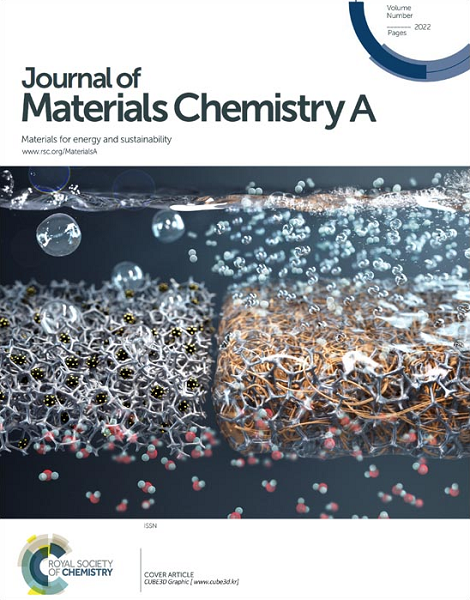Asymmetric structure endows thermal radiation and heat conduction of graphene film for enhancing dual-mode heat dissipation
IF 10.7
2区 材料科学
Q1 CHEMISTRY, PHYSICAL
引用次数: 0
Abstract
To prevent heat accumulation generated by high power components inside spacecraft, it is necessary to encapsulate a heat dissipation material on the exterior surface of the spacecraft to homogenize local “heat point” and subsequently transfer it to aerospace.Hence, developing a flexible heat dissipation material with superior thermal radiation characteristics and thermal conductivity is essential for spacecraft thermal management under a vacuum environment. However, traditional heat dissipation materials are incapable to simultaneously satisfy these requirements. Here, we designed a double-layer asymmetric structure to achieve dual-mode heat dissipation of the graphene film, which is verified by FEA (Finite Element Analysis). For thermal radiation layer, the unique rose-like graphene with numerous defects can excite plasmon resonance, which can capture incident infrared wave effectively and make multiple reflection until fully absorbed. The high emissivity reaches 0.99 like blackbody across a wide wavelength range (2.5–18 µm). For thermal conductive layer, the orderly lattice structure facilitates the fast transfer of phonons, ensuring the high thermal conductivity of 1196 W m−1 K−1. These make it possess a better cooling effect compared with single graphene film. This work provides a new strategy to design composite with high thermal conductivity and infrared emissivity simultaneously for spacecraft thermal management. Keywords: Spacecraft thermal management, Heat conduction, Thermal radiation, Graphene film, Asymmetric structure, Dual-mode heat dissipation.不对称结构赋予了石墨烯薄膜的热辐射和热传导,增强了双模散热
为了防止航天器内部大功率部件产生的热量积累,需要在航天器外表面封装散热材料,使局部“热点”均匀化,并将其传递给航天航空。因此,开发一种具有优异热辐射特性和导热性的柔性散热材料对于航天器在真空环境下的热管理至关重要。然而,传统的散热材料无法同时满足这些要求。在此,我们设计了一种双层非对称结构来实现石墨烯薄膜的双模散热,并通过有限元分析进行了验证。对于热辐射层,独特的多缺陷玫瑰状石墨烯可以激发等离子体共振,有效捕获入射红外波,并进行多次反射直至完全吸收。在宽波长范围(2.5-18µm)内,高发射率达到0.99,与黑体相似。对于导热层,有序的晶格结构有利于声子的快速传递,保证了1196 W m−1 K−1的高导热系数。这使得它比单一的石墨烯薄膜具有更好的冷却效果。为航天器热管理提供了一种同时具有高导热系数和红外发射率的复合材料设计新策略。关键词:航天器热管理,热传导,热辐射,石墨烯薄膜,非对称结构,双模散热
本文章由计算机程序翻译,如有差异,请以英文原文为准。
求助全文
约1分钟内获得全文
求助全文
来源期刊

Journal of Materials Chemistry A
CHEMISTRY, PHYSICAL-ENERGY & FUELS
CiteScore
19.50
自引率
5.00%
发文量
1892
审稿时长
1.5 months
期刊介绍:
The Journal of Materials Chemistry A, B & C covers a wide range of high-quality studies in the field of materials chemistry, with each section focusing on specific applications of the materials studied. Journal of Materials Chemistry A emphasizes applications in energy and sustainability, including topics such as artificial photosynthesis, batteries, and fuel cells. Journal of Materials Chemistry B focuses on applications in biology and medicine, while Journal of Materials Chemistry C covers applications in optical, magnetic, and electronic devices. Example topic areas within the scope of Journal of Materials Chemistry A include catalysis, green/sustainable materials, sensors, and water treatment, among others.
 求助内容:
求助内容: 应助结果提醒方式:
应助结果提醒方式:


